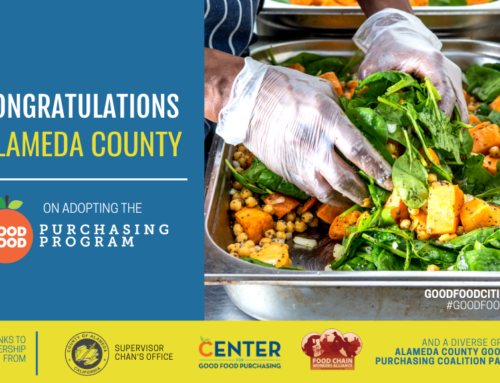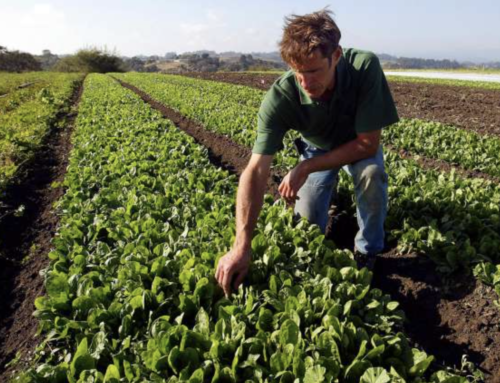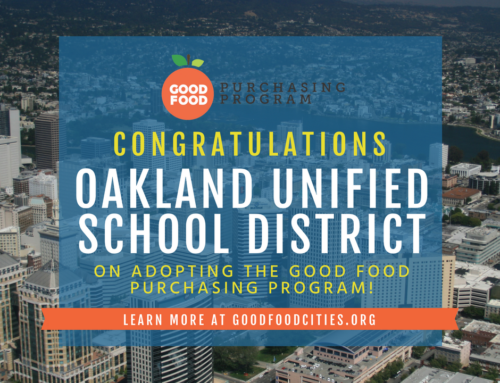Purchasing program bolsters nutrition, sustainability, and local sourcing
Can public schools influence our nation’s food policy?
They can, and San Francisco schools recently signed on to direct their substantial purchasing power toward healthy, local food. As this magazine was going to press, Oakland was poised to join San Francisco and become the first city in the East Bay to adopt the Good Food Purchasing Program. Participation requires food purchases to meet criteria based on five core values—environmental sustainability, worker well-being, health and nutrition, support for local economies, and animal welfare. Transparency is also a priority, meaning that it’s easy to trace produce, meat, and fish back to their origins.
According to Alexa Delwiche, executive director at the Center for Good Food Purchasing, institutions can participate to varying extents, with three levels tied to each core value. Asked about some of the concrete actions that schools have already taken, she cited Meatless Mondays as well as the option of serving higher quality meat, but less of it. For example, instead of burgers, a cafeteria might offer tacos or chili made with both beef and beans. Delwiche and her staff help schools with planning, implementation, and evaluation.
Real Food Media works closely with the purchasing program and hosted the event Good Food Rising at Berkeley’s David Brower Center to help spread the word. Author Anna Lappé, who directs Real Food Media, says she’s excited to see incentives for big changes up and down the supply chain. Farmers and other food producers enjoy the certainty that comes with institutional purchases and can reduce prices when they can count on sizeable orders. Food-chain workers, from farm laborers to truck drivers, appreciate higher standards related to wages and working conditions.
Los Angeles was the first city to sign on back in 2012, and others around the country, including Chicago and Austin, are taking a serious look. After two years in the program, LAUSD increased local sourcing of produce to an average of 60% from less than 10%. At the same time, 150 new food-processing jobs were created and 600,000 Los Angeles students were served healthier meals.
The potential for magnifying these types of changes is huge, given the likely addition of more school districts and the possibility that public hospitals, airports, and prisons may also opt in. The total spent on food by the Los Angeles, Oakland, and San Francisco districts alone is $200 million per year. “Harnessing the power of public dollars for food that’s good for the planet, people, animals, and our communities is a commonsense idea that’s capturing the imagination of cities around the country,” says Lappé.





